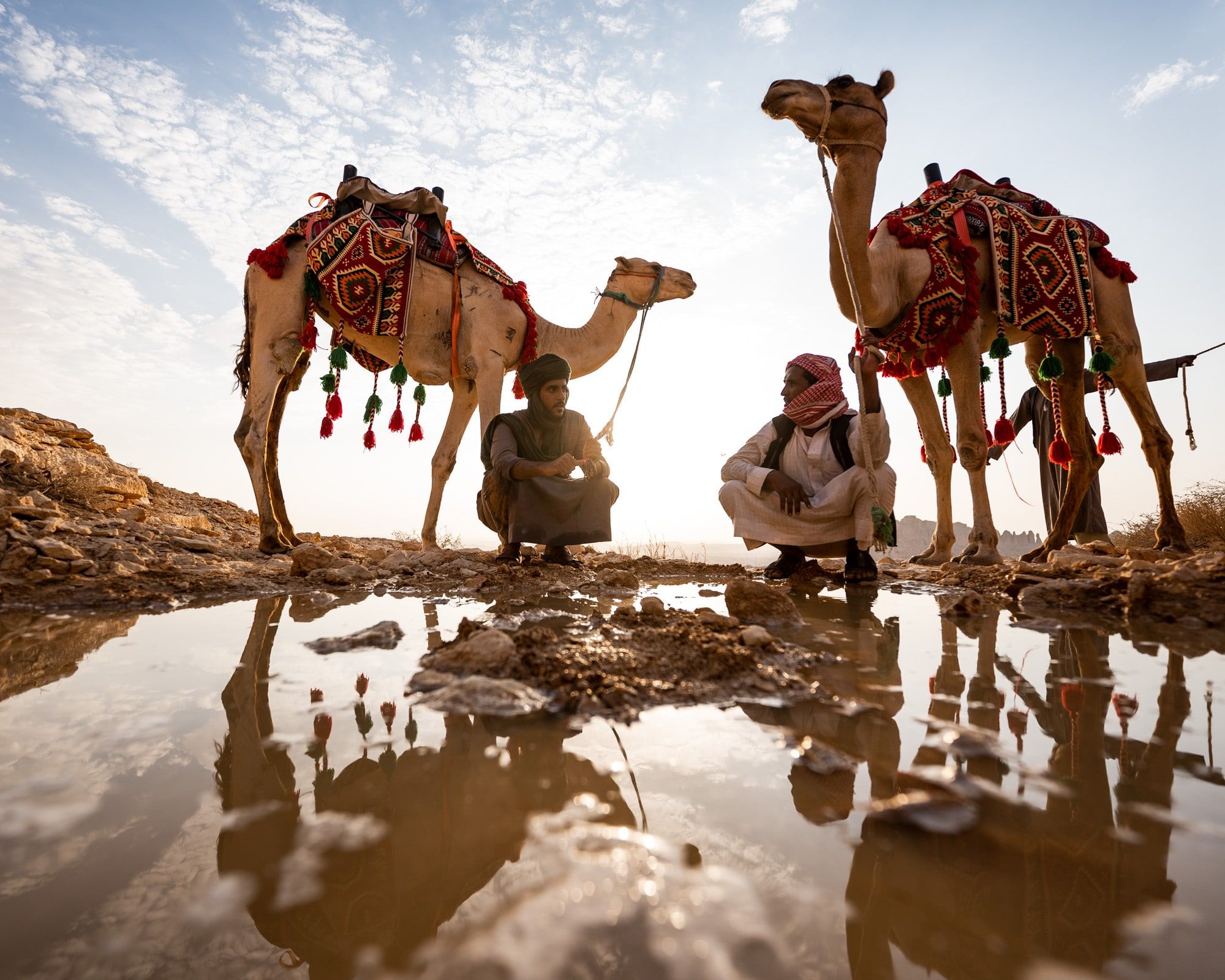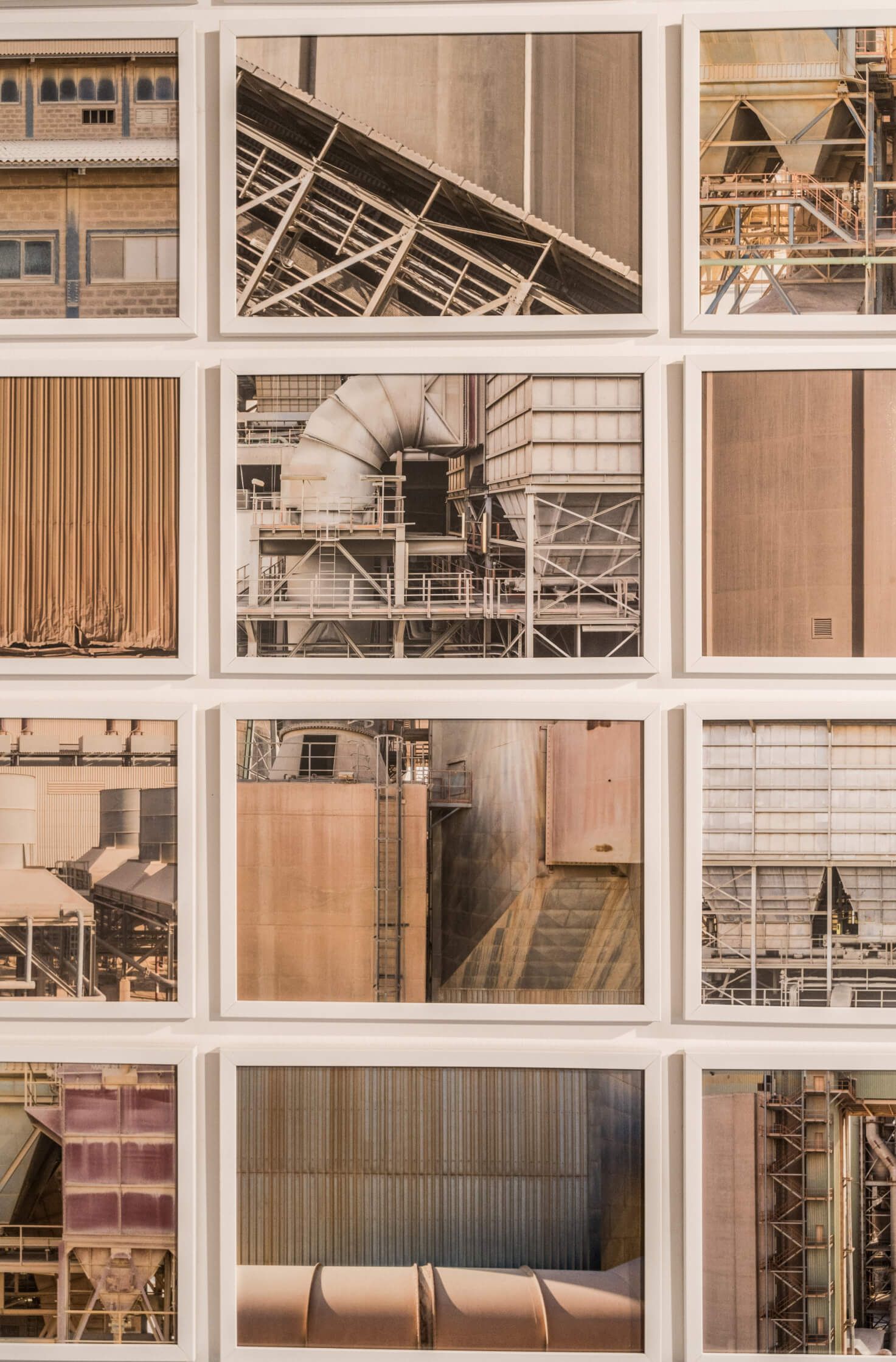Colors of Music
Oud Player 140x200cm. Acrylic on canvas. Courtesy of the artist.
The artist Fadi Al-Daoud loved music, so he used his brushes to play the most beautiful and unique visual formations on his paintings.
He began his artistic journey early, at the age of ten, and his father, the artist Khaldoun Al-Daoud, set up an exhibition for him, with the support of him and his artist friends. He studied at the hands of great Arab artists, such as Hussein Bikar and George Al-Bahjouri. Al-Daoud studied art at the University of Jordan, graduated in 2006, and earned a masters in fine arts from Florence, Italy.

Untitled, courtesy of the artist.
Al-Daoud's brush is characterized by high fluidity, as the visual formations in the painting allow you to imagine the smooth movement of the musicians, so that you can almost hear their playing. His paintings, which focuses on music, reflect his sense of nostalgia for the beautiful past, as each corner of the painting tells a moment from the past embodied in visual instrumentals that take the viewer to memories of the golden age of the Arabic song. Al-Daoud draws characters from the legends of Arabic singing, such as: “Umm Kulthum”, “Asmahan” and “Fayrouz”, honoring their works in his own style, creating his unique paintings from their voices.
Al-Daoud was deeply attached to art and music from an early age. He tried all musical instruments and expressed his experience saying: “I am very fond of music, and I had repeated attempts to learn the oud and some other musical instruments, but all my attempts failed, and I compensated for my love for it by drawing music, my favorite artists and singers, and painting them was nothing more than an attempt to embody the true feel of the song on a painting". He talked about "Umm Kulthum", saying: "I have been attached to Umm Kulthum since childhood, because her voice is wonderful and her words take the listener to another dimension, and I consider her songs a complete and integrated project, between a composer, a writer of words, a singer, and an arranger. Her concerts are a musical play, in which every performer has a role in this play, so the final work is a great work, so every time I hear a song by Umm Kulthum, I feel a new feeling, as the meaning in me changes completely, and another meaning and another artistic image is formed.
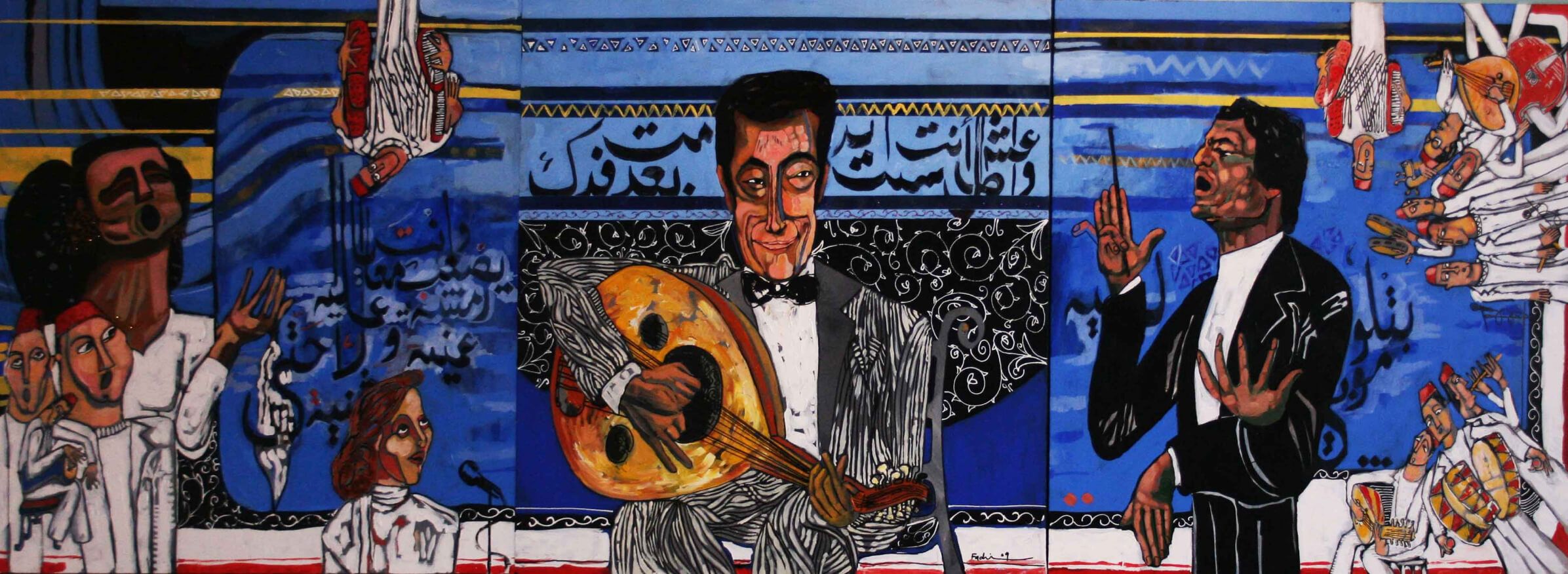
Untitled, courtesy of the artist.
Fadi Al-Daoud also evokes, through his paintings, the beauty of Islamic and mathematical geometry, as his paintings are decorated with Islamic patterns inspired by the structures of mosques and Islamic architecture. His paintings consisted of intersecting circles and straight lines, which seemed like strings in rich colors, focusing on highlighting the details of the painting's characters.
Al-Daoud describes his own style of drawing, saying: "I acquired this style through my study of Islamic art and geometry, the method of drawing a circle, the meaning of a point and a straight line, and the relationship between them in geometric form.
All the lines and circles in my paintings have meanings, symbols, and clues related to ancient civilizations, in line with Islamic geometry and the patterns that we see in the mosques. I did not add anything new, but only redeveloped this art in a way that is compatible with modernity." Al-Daoud also draws inspiration from the human body, so he considers a single straight line like a human cell, as his drawing begins with a single line. The lines then intersect and link together, resembling the link of oxygen and hydrogen atoms with each other.
And speaking of the difference in his style between his works in the past and the present, he says: "In the past I used to work extensively on the background of the painting, and now I work only on the main character in the painting, as I put all my focus on it, while the background remains only one color. I make sure to reduce the shapes In my painting, down to one or two shapes, so that the viewer's eyes can focus on the details of the character that is full of clues and symbols”.
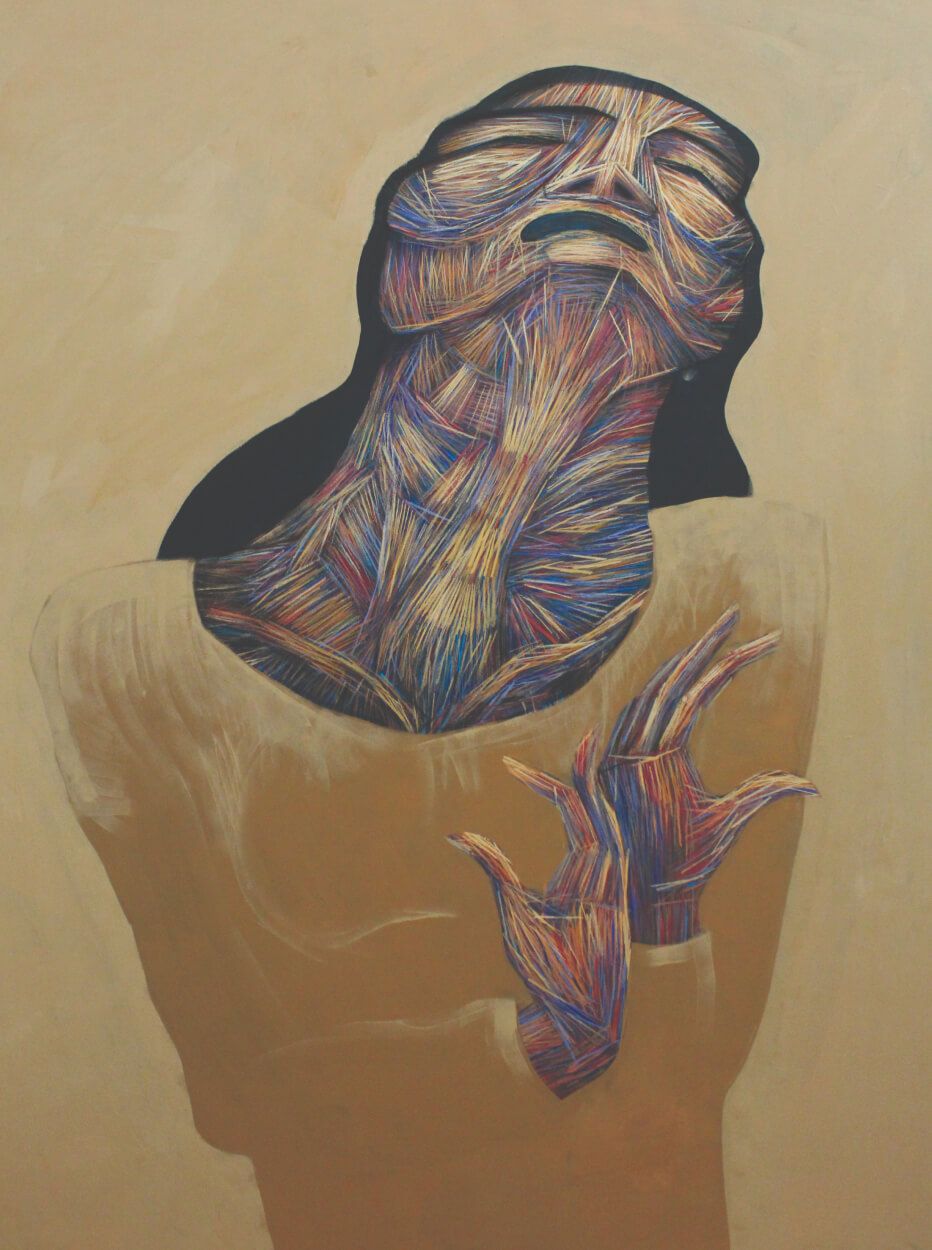
Thy Kingdom Come. Love. Acrylic on canvas, 2015, 195x145cm, Courtesy of the artist.
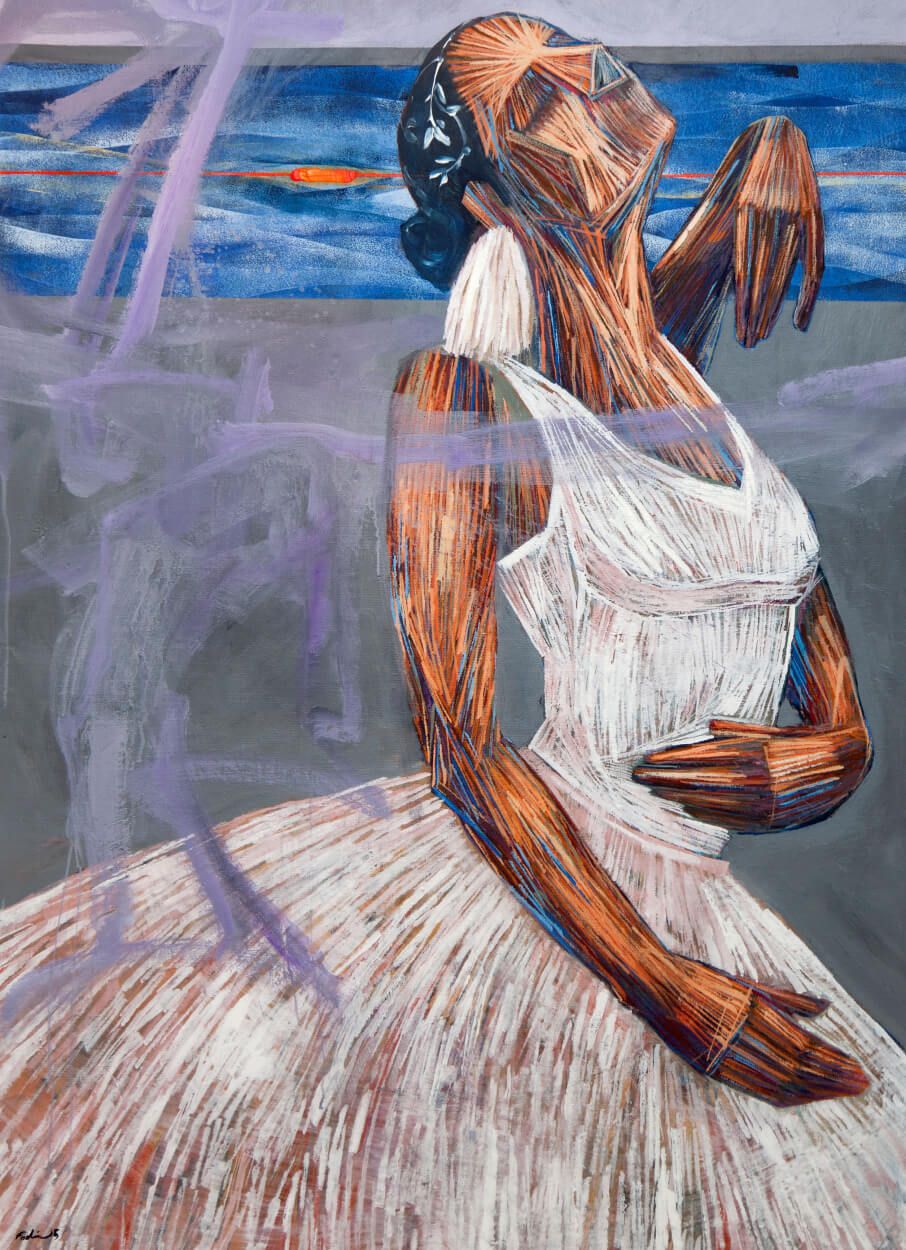
CATATONIA, Acrylic on Canvas, 130 X 100 cm, 2015. Courtesy of the artist.

CATATONIA, Acrylic on Canvas, 130 X 100 cm, 2015. Courtesy of the artist.
Al-Daoud believes that the true artist is inspired by the idea after God harnesses the time and space around him, and prepares them for the appropriate conditions to meet for the birth of the idea. He says: "The artist draws with a divine will, and by that I mean that God inspires the artist like he inspires the doctor, or the scientist, to invent new ideas. This comes after all the information required to create that idea are available in the artist's mind." He also believes that the idea comes after waiting, as he says: "I am very attached to my studio, because in moments of calm, the idea comes after waiting, and after a spiritual connection takes place between heaven and earth, where the drawing is like the message that our Lord sends to me to draw."
Al-Daoud believes that talent cannot grow and flourish in an environment that is not supportive, as the emerging artist needs awareness, guidance and motivation to learn art, and he says: “A supportive environment is the basis of the artist, and the different environments surrounding artists when they are young; it is what generates distinction and diversity, so artists are held accountable for their skills in art differently, according to the privileges that were available to them in their upbringing.
As for his upcoming art projects, Al-Daoud is preparing to hold a number of upcoming exhibitions in London, Dubai, Saudi Arabia and Jordan, in which he will display a number of his new paintings.

Calm and Tranquility, Acrylic on Canvas, 100x290cm, 2015
